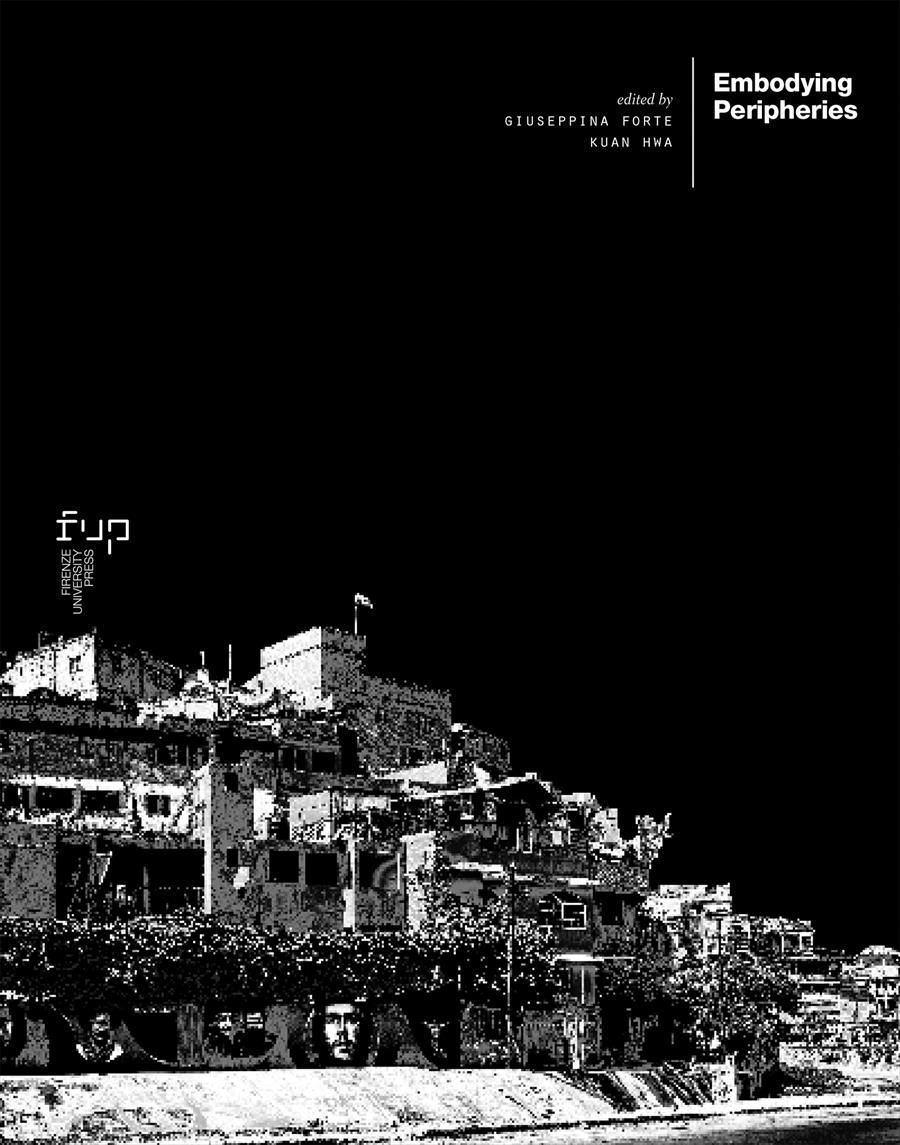- Embodying Peripheries
- Edited by Giuseppina Forte, Kuan Hwa
Gurgaon: Unfinished City, a photographic essay
- Sarth Khare
- © 2022 Author(s) |
- CC BY-NC-ND 4.0
- DOI: 10.36253/978-88-5518-661-2.12
As Gurgaon expands horizontally and vertically, it continues to transition from farms to urban villages to a concrete maze. This photographic project documents the growth of Gurgaon a city recently developed near India's capital, Delhi. It is a booming financial and industrial center, home to most Multinational Corporations (MNCs) and has third highest per-capita income in India. As its advocates often like to point out, Delhi’s booming neighbor has 1,100 high-rises, at least 30 malls and thousands of small and big industries. On the other hand, as its detractors unfailingly like to note, the dust bowl’s population has grown two and a half fold, it has 12-hour power blackouts, and its groundwater would probably not last beyond this decade. Gurgaon's transformation began sometime around 1996, with the advent of Genpact, then a business unit of General Electric. Other multinational companies followed it slowly thereafter. It helped that the city was a few kilometers away from Delhi. Two decades on, Gurgaon is already "on its deathbed." From 0.8 million in 2001, the city is expected to reach a population of 6.9 million in 2031. It is speckled with glass buildings with curtain walls, and swish apartment blocks with Greco-Roman influences, but there is little water or power for them. These numbers alone don’t capture the lived reality of Gurgaon, though. The skyline that its older residents were accustomed to has completely disappeared. And yet on the periphery, one sees the "Unfinished City" growing. The landscapes and flora shouting; their sentiments brutalized by evictions and concrete. Slaughtered farms now seem witness to monstrosity with desolate faces and fading memories. Set in 2014 the project explores the ephemerality of Gurgaon’s glamor and defective town planning. Families had been displaced, laborers’ children were growing up on heaps of cement, and farmlands had turned into things of memories.
- Keywords:
- development,
- liberalization,
- land-acquisition,
- India,
The University of Texas at Austin, India
- Bhan G. 2019, “Notes on a Southern Urban Practice,” Environment and Urbanization, 31(2), pp. 639-654, doi:10.1177/0956247818815792.
- Bird K., Deshingkar P. 2009, “Circular Migration in India,” ODI Policy Brief No. 4, <https://cdn.odi.org/media/documents/3381.pdf>.
- Cowan T. 2015, “Fragmented Citizenships in Gurgaon,” Economic & Political Weekly, 26-27, pp. 63-73.
- Cowan T. 2018, “The Urban Village, Agrarian Transformation, and Rentier Capitalism in Gurgaon, India,” Antipode, 50(5): pp. 1-23, doi:10.1111/anti.12404.
- Kanungo S. 2016, “Gurgaon Model Can Be Repeated in Rest of Haryana: Manohar Lal Khattar,” <https://www.livemint.com/Politics/O2O7xxep6WAc9IU5B02jvO/Gurgaon-model-can-be-repeated-in-rest-of-Haryana-Manohar-La.html>.
- Kapur M. 2020, “India’s Glittering Gurugram Remains a Model of How Not to Build a New City,” Quartz, <https://qz.com/india/1900650/indias-gurugram-remains-a-model-of-how-not-to-build-a-new-city/>.
- Khare S. 2016, “Changing Gurgaon’s Name Won’t Put off Its Imminent Death,” <https://scroll.in/roving/807066/in-photos-changing-gurgaons-name-wont-put-off-its-imminent-death>.
- Kumar A. 2014, “DLF's KP Singh: Meet the Man Who Built Gurgaon out of Nothingness,” The Economic Times, <https://economictimes.indiatimes.com/news/company/corporate-trends/dlfs-kp-singh-meet-the-man-who-built-gurgaon-out-of-nothingness/articleshow/4481884>.
- Kumar K. P. N., Misra U. 2012, “Gurgaon: How Not to Build a City,” Forbes India, <https://www.forbesindia.com/article/real-issue/gurgaon-how-not-to-build-acity/33444/1>.
- Lynch K. A. 1960, The Image of the City, MIT Press, Cambridge, MA.
- Ministry of Housing and Urban Poverty Alleviation. 2017, “Report of the Working Group on Migration,” Government of India.
- Raghav P., Joshi A. 2019, “Socio-Economic Dynamics of a Slum in an Expanding City: A Study of Gurgaon, Haryana,” International Journal of Recent Technology and Engineering, 7(6S5), pp. 283-289.
- Rajagopalan S., Tabarrok A. T. 2014, “Lessons from Gurgaon, India's Private City,” GMU Working Paper in Economics, 14-32, SSRN: <https://ssrn.com/abstract=2514652> or <http://dx.doi.org/10.2139/ssrn.2514652>.
- Sundari S. 2005, “Migration as a Livelihood Strategy: A Gender Perspective,” Economic and Political Weekly, 40(22-23) <https://www.epw.in/journal/2005/22-23/review-labour-review-issues-specials/migration-livelihood-strategy.html>.
- Times of India. 2016, “Gurugram Fiasco: Gurgaon’s Brand Identity as ‘Millennium City’ Stands Erased at One Stroke,” Times Of India Blog <https://timesofindia.indiatimes.com/blogs/toi-editorials/gurugram-fiasco-gurgaons-brand-identity-as-millennium-city-stands-erased-at-one-stroke/>.
- Times of India. 2019, “Manesar Land Scam: CBI Court Declares Gurugram-based Realtor PO,” Times of India, <https://timesofindia.indiatimes.com/city/gurgaon/manesar-land-scam-cbi-court-declares-gurugram-based-realtor-po/articleshow/68716371.cms> [Accessed 16 Oct. 2019].
- Varghese A. 2009, “It Takes a Village,” Tehelka, <http://old.tehelka.com/it-takes-a-village/> [Accessed 17 Oct. 2019].
- Vyas V. 2018, “Gurugram Is a City with Local Joys and Global Amenities,” Hindustan Times, <https://www.hindustantimes.com/gurgaon/gurugram-is-a-city-with-local-joys-and-global-amenities/story-jpv3nOrUrZiRONGCZFkqOM.html>.
- Yardley J. 2011, “In India, Dynamism Wrestles with Dysfunction,” New York Times, <https://www.nytimes.com/2011/06/09/world/asia/09gurgaon.html> [Accessed 16 Oct. 2019].
Chapter Information
Chapter Title
Gurgaon: Unfinished City, a photographic essay
Authors
Sarth Khare
Language
English
DOI
10.36253/978-88-5518-661-2.12
Peer Reviewed
Publication Year
2022
Copyright Information
© 2022 Author(s)
Content License
Metadata License
Bibliographic Information
Book Title
Embodying Peripheries
Editors
Giuseppina Forte, Kuan Hwa
Peer Reviewed
Number of Pages
304
Publication Year
2022
Copyright Information
© 2022 Author(s)
Content License
Metadata License
Publisher Name
Firenze University Press
DOI
10.36253/978-88-5518-661-2
ISBN Print
978-88-5518-660-5
eISBN (pdf)
978-88-5518-661-2
eISBN (xml)
978-88-5518-662-9
Series Title
Ricerche. Architettura, Pianificazione, Paesaggio, Design
Series ISSN
2975-0342
Series E-ISSN
2975-0350
